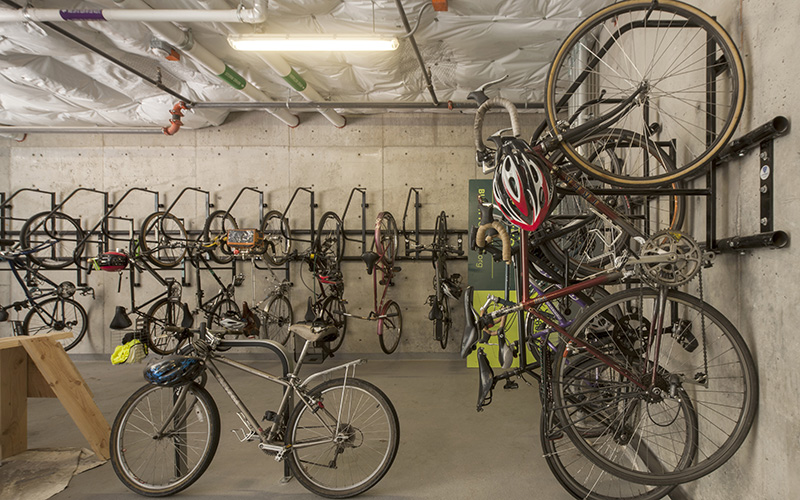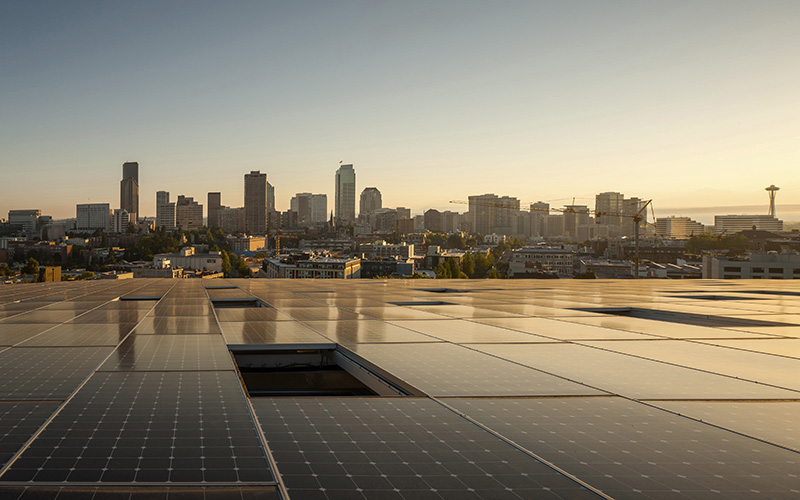TEMPE – Denis Hayes, a co-founder of Earth Day in 1970, is working toward a greener future that focuses on developing “living buildings” that rely on nature, the sun and the rain, to operate.
Think of them as buildings that regenerate, harnessing solar power and harvesting rainwater for energy and other uses. Essentially, a building has to produce more energy and water than it needs.
Hayes, who led solar energy research under the Carter administration and is now president of the Seattle-based Bullitt Foundation, visited Arizona in early October to convince architects, Arizona State University educators and other sustainability advocates to meet the certification rigor of his Living Building Challenge.
Hayes met with a local architecture firm, the Architectural Resource Team, who are developing an office building that is attempting to meet the standards. Construction will start by early next year on the Sonoran Studio in central Phoenix.
The sustainability advocate, in an interview with Cronkite News, discussed why living buildings matter, why millennials may save the planet and establishing cities and zones that are green in more than name.
Cronkite News: What decisions went into establishing the standards for a living building?
Hayes: The kind of thought that went into the initial Living Building Challenge, which is on version three and constantly evolving, is to try and figure out how to build a building that will leave the area on which it was built better than when you arrived. In our case (at the Bullitt Center), there was a one-story tavern and three-fourths of the lot was covered by an asphalt parking lot. It turns out the challenge for us was we could’ve done almost anything and it would’ve been better than when we arrived.
But a Living Build isn’t just to minimize the damage that we do, but actually making things better. We try to use principles of ecology to have buildings on any site function pretty much like the natural ecosystem did prior to that. So, if you’re in Phoenix that’s a bunch of succulents and cactuses and things. If you’re in the Pacific Northwest, it’s a Douglas fir forest.”
CN: The Bullitt Center was built under your leadership. How did you get involved?
Hayes: The Bullitt Foundation is set up to link the cities of the Northwest – Portland, Seattle, Vancouver – as models of sustainability in the 21st century. We have a lot of advantages in that part of the country. It is relatively well-educated, politically progressive, reasonably wealthy and pretty environmentally oriented. So, if we can’t do it in Portland, Seattle and Vancouver, which has in it Amazon, Microsoft, Starbucks, Nike, on and on, then it would be pretty difficult to do it in any place.
We’re looking for models to be replicated as cities are built. As part of that effort, we were concerned that all of the building being built were ‘greenish,’ but not truly sustainable. So, we decided to build a commercial building with regular tenants, not green beasts with the Sierra Club, that would be the greenest office building in the world. Now, the Greater Seattle King County is a water district and the Bullitt Center is its own water district. The bottom line is that we managed to put together a building that is at the cutting edge and that the tenants seem to love.
CN: What is it like working in what you call the ‘greenest building in the world?’
Hayes: The Bullitt Center is the most comfortable office in the city. In the summer, at 4 o’clock in the afternoon, if you’re sitting next to a west-facing window in a typical office building in Seattle, you are frying. Twenty feet inside, you are freezing. In the Bullitt Center, the temperature is reasonable throughout the building, it’s uniform throughout the building. We have virtually all of our lighting coming from daylight, which is what the human species evolved with. People like the fact they get different wavelengths in the morning than they do in the afternoon. The cost of this is that we have no parking for the building, but we have enormous public transportation. We encourage people to use the stairways instead of the default being the elevator.
CN: Why is it important for younger generations to work toward a career in sustainability?
Hayes: Change, historically, has always came from the very young. I think it must be a hallmark of our species. The folks with the bold ideas tend to be in the 25-30 range. Now, in an era where sustainability has become a huge challenge, where buildings produce 47 percent of greenhouse gases, sustainability is really the big challenge facing this next generation. We encourage people, whether they’re in architecture, physics, biology or business, to think about weaving those values into whatever it is they choose to do with their lives.
CN: What are the topics of the meetings you have at Arizona State University?
Hayes: Arizona State University has become recognized as a superb organization on a broad array of sustainability topics. If the best buildings are going to be built by and for institutions who are going to hold on to them for a long time and if what I am trying to do is promote sustainable buildings, then ASU is kind of a prime target. So, we are meeting with a lot of the people who are responsible for the university’s decisions and also for the decisions about private developers on land that is leased by the university for development.
The pitch: Leland Stanford gave Stanford University a huge amount of land in the Palo Alto area, part of which is the campus and part of which, much like Arizona State is doing with adjacent land, they leased it. But, it wasn’t a “come and get it.” It was a carefully designed program led by the provost of the university to attract technology firms that would take advantage of the engineering skills that Stanford was going to bring. Ultimately, that became the Silicon Valley and a part of the digital revolution that took over the world.
If we are going to have a sustainability revolution, that could well be rooted here in Arizona State University if we make the right set of decisions about creating a similar park. I’ve been hysterically pushing them to make that choice.

